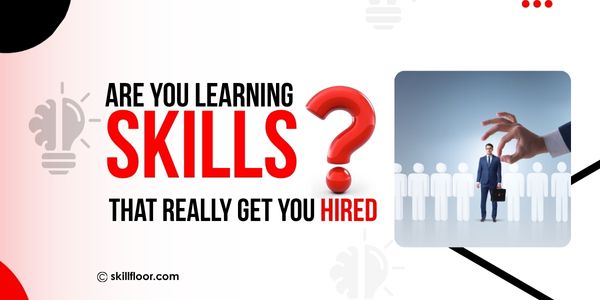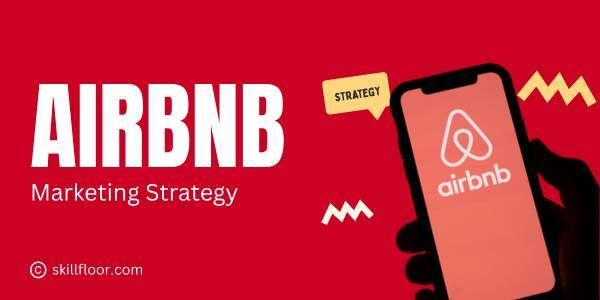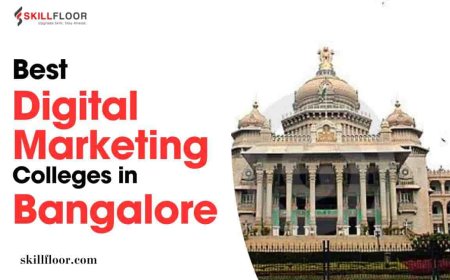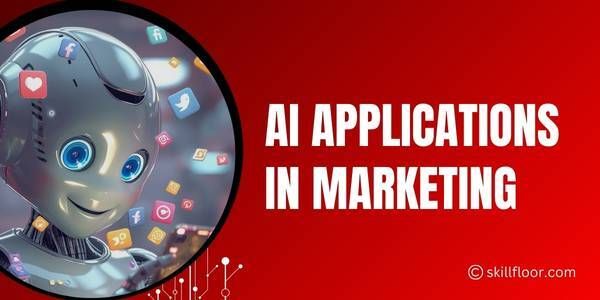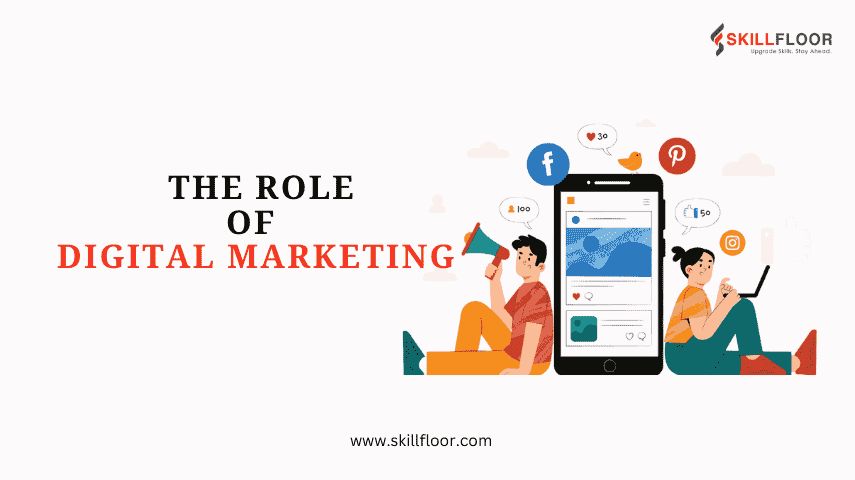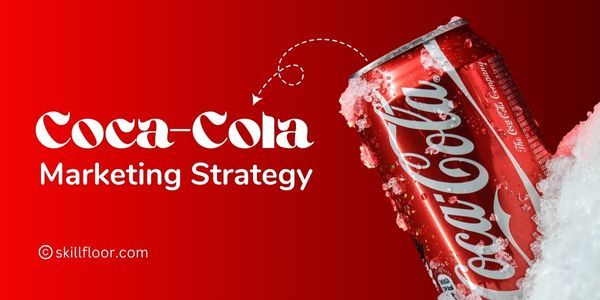Red Bull Marketing Strategy: Case Study
Explore the innovative marketing strategy of Red Bull, focusing on brand positioning, sponsorships, and content marketing that drives global engagement.

Red Bull’s marketing is different — and it grabs attention. Instead of regular ads, Red Bull does big, bold things like sending a man to jump from the edge of space or running flying machine contests powered by people. These events help the brand stand out in a crowded market full of similar drink ads.
Red Bull doesn’t follow the usual marketing rules. It tells exciting stories and creates unforgettable experiences. In this post, we’ll look at how Red Bull became a powerful brand — by sharing its ideas, strategies, and how it built a whole culture around the idea of “giving you wings.” We’ll also explore how Red Bull uses media, stunts, student marketing teams, and even its pricing to stay ahead.
Brand Philosophy and “Red Bull Gives You Wings”
Red Bull is more than an energy drink. It’s about helping people feel ready to do something big — whether that’s a sport, a project, or just getting through a long day. The slogan “Red Bull gives you wings” means the drink gives you energy and confidence to take action.
Instead of just selling a drink, Red Bull connects with people through exciting experiences. For example, they sponsored a space jump where Felix Baumgartner jumped from the edge of space. That event wasn’t just about energy — it showed courage, action, and pushing limits.
Even their cartoon ads make this idea simple. In one ad, a bored character drinks Red Bull, grows wings, and flies out of a dull situation. It’s a fun way to say: Red Bull helps you move forward, no matter what you’re doing.

Content-First Marketing: Red Bull Media House and Red Bull TV
Red Bull doesn’t just sell energy drinks — it creates content like a media company. In fact, many experts say Red Bull is more of a media brand that just happens to sell drinks. In 2007, it launched Red Bull Media House, a team that makes videos, films, articles, and more about sports, music, and adventure.
Instead of showing regular ads, Red Bull gives people exciting stories they actually want to watch. For example, Red Bull TV streams live sports events, music festivals, and esports tournaments. These shows look just like something you’d see on a big TV network because Red Bull uses high-quality cameras, editing, and storytelling.
One great example is when Red Bull filmed the Red Bull Rampage, a wild mountain biking event on steep desert cliffs. The video clips got shared all over social media and brought attention not just to the event, but also to the brand behind it.
Red Bull makes content in many languages and covers over 600 sports and events. Each sport even has its own Instagram or YouTube account, filled with highlights, athlete stories, and clips shared by fans.
By focusing on powerful content instead of just product ads, Red Bull has gained millions of followers online — all drawn in by the exciting stories and moments they share.
Experiential Marketing: World Records, Flugtag, Rampage and More
Red Bull doesn’t just make content — it creates real-world events that people watch, join, and remember. These experiences bring the brand to life and make it part of exciting, fun, or extreme moments.
Key Events That Built the Brand
-
Red Bull Stratos (2012):
-
Skydiver Felix Baumgartner jumped from 39 km above Earth.
-
He broke the sound barrier while falling.
-
The stunt got global media attention and over 50 million YouTube views.
-
It perfectly fit the slogan “Red Bull gives you wings.”
-
Red Bull Flugtag (Flying Day):
-
People build crazy flying machines and launch them off a ramp into water.
-
Fun, creative, and very shareable on social media.
-
Events are held worldwide with big live crowds.
-
Red Bull Rampage:
-
A dangerous mountain bike competition on steep cliffs in Utah.
-
Riders perform wild tricks and jumps.
-
Shows Red Bull’s deep connection with extreme sports.
-
Other Major Events:
-
Red Bull Air Race: Fast airplane races through obstacle courses.
-
Red Bull X-Fighters: Freestyle motocross with high jumps and flips.
Why It Works
-
Red Bull creates events that people want to watch and talk about.
-
These are not regular ads — they are live experiences that connect with fans emotionally.
-
The brand becomes part of people’s memories, not just a product on a shelf.
Sponsorship Strategy: F1, Football Clubs, and Star Athletes
Red Bull invests heavily in sports — not just events, but full teams and athletes — to keep its brand visible wherever energy, speed, and performance are on display.
Major Sports Involvement
-
Formula 1:
-
Owns Red Bull Racing (now Oracle Red Bull Racing) since 2005.
-
The team is a top performer and highly active on social media.
-
Over 11 million followers on its F1 Instagram account.
-
Athlete Sponsorships:
-
Supports athletes in 73+ countries.
-
Includes champions like Sebastian Vettel, Shaun White, and top cyclists, surfers, snowboarders, and more.
-
Athletes wear Red Bull-branded gear and act as ambassadors.
-
Football (Soccer) Teams:
-
Owns clubs like:
-
RB Leipzig (Germany)
-
FC Red Bull Salzburg (Austria)
-
New York Red Bulls (USA)
-
Red Bull Brasil and other teams
-
Stadiums (like Red Bull Arena) and team names carry the brand globally.
Why It Matters
-
Red Bull’s logo appears at thousands of games and events.
-
Athletes and teams reflect Red Bull’s image: energy, achievement, and confidence.
-
Social media extends the reach – athletes share Red Bull-branded content with millions of followers.
-
Red Bull becomes part of fans' everyday sports experience, not just a product.
Grassroots and Guerrilla Tactics: Campus Crews and Mini Coopers
Red Bull’s success also comes from grassroots marketing, especially through its Student Marketeer program, where college students promoted the drink on campus by handing out free cans and organizing events. This personal, direct approach made Red Bull part of student life.
The brand also used Mini Coopers with giant Red Bull cans to create buzz around college towns. These cars handed out drinks and became a viral sensation, shared across social media.
By meeting students where they lived and socialized, Red Bull built strong, loyal connections without relying on traditional ads.
Premium Pricing and Controlled Distribution

Red Bull’s success doesn’t rely on competing with other drinks based on price or availability. Instead, the brand positioned itself as a premium product from the start, pricing its energy drink higher than regular sodas. Red Bull sells more than just a drink; it offers a lifestyle—one centered around energy, vitality, and excitement. Customers aren’t just paying for the product; they’re paying for the brand’s identity.
The brand also maintains selective distribution. Red Bull’s products are sold only in places frequented by its target audience, like college bookstores, bars, gyms, and convenience stores, avoiding discount aisles and mass-market channels. This controlled distribution enhances its exclusivity. The brand's pricing and limited availability create a “cool factor,” making consumers feel they’re choosing something special, not just another energy drink.
Red Bull also controls its product placement through its own network of distributors and field sales reps, ensuring the product is prominently displayed in high-traffic areas. The result is an energy drink that’s more than just a beverage—it’s a premium experience tied to an exclusive, high-energy lifestyle.
Advertising Approach: From Cartoon Spots to Viral Videos
Red Bull focuses on unconventional advertising, using in-house content, social media, and events instead of traditional TV ads. Their animated commercials are memorable, but most marketing dollars go into content like Red Bull TV and sponsored athlete videos. They also use product placements in films and games.
Red Bull spends 25-30% of its revenue on marketing, primarily for content creation and sponsorships. Here's the breakdown:
|
Marketing Spend (%) |
Revenue (approx.) in USD Billion |
|
25–30% |
$8–9 billion |
This approach helps Red Bull maintain a strong, engaging brand presence globally.
Promotion Platforms: How Red Bull Reaches More People
Red Bull uses many channels to promote its brand, not just traditional ads. It mixes digital, social, live events, and unique marketing to connect with different audiences. Here’s how:
1. Social Media
Red Bull is strong on platforms like Facebook, Instagram, YouTube, Twitter, and TikTok. Each has its own style of content. They post sports clips, fun challenges, and reply to fans. They also run special pages for events like Red Bull Racing. TikTok posts get high engagement, and Instagram reels get thousands of likes.
2. Red Bull TV and Streaming
Red Bull TV shows live sports, music events, and documentaries. It’s free and works on phones, smart TVs, and the web. Big events like the Stratos space jump were streamed to millions. This helps Red Bull act like a media brand, not just a drink.
3. Traditional Media
Red Bull still uses TV, print, and billboards. Their cartoon ads are well-known. They also have a magazine called The Red Bulletin. In some places, like Thailand, they put ads on trucks for extra reach.
4. Online Shopping and Pop-Ups
Red Bull sells directly through its website and on sites like Amazon. They also set up “Energy Stations” — small pop-up stores in busy places like parks and colleges. These spots give out free samples and build brand awareness.
5. Guerrilla Marketing and Word-of-Mouth
Red Bull started with clever tricks like placing empty cans in clubs to make it seem popular. Today, they do big stunts and use branded cars. Their student program helps spread the word on campuses with free drinks and events.
6. Event Sponsorships and Live Shows
Red Bull hosts and sponsors events like Flugtag and Dance Your Style. These events are fun, shared online, and bring fans together. They also set up cool spaces like the Red Bull Sound Space for live music and fan experiences.
Why This Matters
Red Bull uses all these platforms to stay in front of different audiences. Whether it’s online, in person, or on TV, they keep their message fun and energetic. This approach turns viewers into fans and builds strong brand loyalty.
Revenue Streams: Diverse Income Beyond Energy Drinks
Red Bull’s financial success is driven by more than just energy drink sales. With a global turnover of €10.554 billion in 2023 (up 9% from €9.684 billion in 2022), the brand has diversified its revenue streams through strategic ventures in sports, media, and merchandising. Below are the key revenue streams and their contributions:
Energy Drink Sales
The core of Red Bull’s revenue comes from selling energy drinks, accounting for over 90% of its income. In 2023, Red Bull sold 12.138 billion cans worldwide, a 4.8% increase from 2022, generating approximately $8–9 billion. The brand’s premium pricing strategy — higher than competitors like Monster or Coca-Cola — ensures high profit margins. Fast-growing markets like India (+30%), Brazil (+22%), and Eastern Europe (+22%) have fueled this growth, with Red Bull holding a 38–40% global market share in the energy drink industry.
Sports Sponsorships and Team Ownership
Red Bull generates significant revenue through its sports ventures, including ownership of teams like Red Bull Racing (Formula 1), RB Leipzig, and New York Red Bulls. These teams earn income from sponsorship deals, merchandise sales, and event partnerships. For example, Red Bull Racing’s partnerships with brands like Oracle and Honda contribute millions annually. Sponsoring over 500 athletes across 73 countries also drives revenue through branded merchandise and event ticket sales. These activities not only promote the brand but also create lucrative income streams.
Media Production and Licensing
Red Bull Media House is a major revenue driver, producing content for Red Bull TV, The Red Bulletin magazine, and the Red Bull Content Pool, which offers over 300,000 photos and 22,000 HD videos for editorial use. The company earns money through licensing deals with networks, advertising partnerships, and branded content collaborations, such as with GoPro. Red Bull’s YouTube channel, with 6,000+ videos and 120 million views for its Stratos video, also generates ad revenue. This media arm positions Red Bull as a content creator, diversifying its income beyond beverages.
Merchandising and E-Commerce
Red Bull’s branded merchandise — including clothing, accessories, and limited-edition cans — is sold through its e-commerce platform and Energy Stations. Unlike competitors, Red Bull restricts merchandise to its “inner circle,” enhancing exclusivity and demand. Sales of team-branded gear, like Red Bull Racing apparel, contribute significantly, especially among sports fans. The e-commerce platform also drives direct-to-consumer sales, boosting revenue while reinforcing brand loyalty.
Event Revenue
Hosting and sponsoring events like Flugtag, Rampage, and Air Race generates revenue through ticket sales, sponsorships, and on-site merchandising. These events attract thousands of spectators and millions of online viewers, creating additional income through streaming partnerships and advertising. For instance, the Stratos jump’s live stream, facilitated by GoPro, drew massive viewership, translating into advertising and partnership revenue.
Why Revenue Diversification Matters
Red Bull’s diverse revenue streams reduce reliance on energy drink sales, which face risks like increasing health consciousness and potential regulatory restrictions on caffeine content. By investing in sports, media, and merchandising, Red Bull creates a robust financial ecosystem that supports its massive marketing budget (estimated at €3 billion in 2023, or 25–30% of revenue). This diversification ensures long-term profitability and global dominance, even in a competitive market.

Digital Marketing and Social Media Presence
Red Bull has a powerful digital presence, using social media to connect with fans through niche sports and events. They have separate social media accounts for each sport they sponsor, such as Red Bull Racing (F1), Red Bull Cliff Diving, and Red Bull Street Style soccer.
Red Bull's content machine publishes across 600 sports events, documentaries, and films, and engages with followers by replying to comments and sharing user-generated content. They also collaborate with celebrities and influencers like Eminem, Shaun White, and Cardi B, co-creating content that resonates with fans.
The brand mixes high-quality videos with playful content, keeping its social media fresh and relatable. Their digital strategy creates a strong community of engaged fans, both by showcasing extreme sports and joining in on internet trends.
Building Culture, Not Just Campaigns

Red Bull has built more than just a beverage brand — it’s created a global subculture centered around action sports, gaming, and music. Instead of relying on ads, Red Bull acts like a media publisher, producing athlete stories, event coverage, and lifestyle content tailored to its audience. This strategy has made Red Bull feel like a community, not a product. Through consistent branding, cultural events, and interactive content, it has positioned itself as a lifestyle choice rooted in energy, identity, and shared experience. Fans don’t just drink Red Bull — they live the brand.
Brand Extensions: Esports, Music, and Red Bull Records
Red Bull has gone beyond selling drinks by integrating into gaming and music. It began sponsoring esports in 2006, treating gamers as serious athletes. Today, Red Bull Gaming TV streams events, interviews, and news, building a dedicated digital space.
In music, Red Bull launched the Music Academy (1998–2019) and Red Bull Records (2007–present), supporting indie and hip-hop artists like AWOLNATION. These efforts position Red Bull as a backer of creativity and youthful culture.
This approach embeds the brand into everyday passions — fans engage with Red Bull through games, music, and events, with the drink becoming part of the experience.
Red Bull’s Cultural Brand Extensions
|
Category |
Initiative |
Key Activity |
Impact |
|
Gaming |
Esports Sponsorship (2006) |
Sponsored players, events, live streams |
Early entry into esports culture |
|
Red Bull Gaming TV |
Streaming news, interviews, tournaments |
Built community around content |
|
|
Music |
Red Bull Music Academy |
Global workshops and festivals (1998–2019) |
Nurtured new artists |
|
Red Bull Records (2007–) |
Independent label for alternative/hip-hop |
Artist development, cultural tie-in |
Sustainability Efforts and Evolving Expectations
As Red Bull expanded globally, its environmental impact drew more attention. The brand emphasizes sustainability through its fully recyclable aluminum cans, use of 95% recycled materials, and energy-efficient production. Red Bull also promotes transport efficiency with lightweight packaging and rail logistics.
However, growing consumer and regulatory pressure is pushing the company to go further. Critics point to rising expectations for health and environmental responsibility. In response, Red Bull is adopting natural refrigerants in coolers and tracking emissions more closely.
To stay relevant, Red Bull must balance its high-energy image with genuine sustainability. The future lies in combining bold branding with eco-conscious innovation.
Key Takeaways and Actionable Insights for Marketers
Red Bull’s marketing story holds many lessons for brands of all kinds. Here are some of the most important ones:
-
Be a Publisher, Not Just a Seller. Red Bull puts audience interests first. Its content (videos, articles, social posts) feels like something fans choose to watch, not ignore. As one marketing expert advises, “to succeed at content marketing like Red Bull, you have to put your audience’s interests first and create stuff that looks and sounds like the kind of content they consume”. Actionable insight: Create branded content that educates or entertains your target audience, even if it doesn’t overtly promote your product. Become a source of value.
-
Create Experiences, Not Just Ads. Red Bull’s biggest wins come from real-world events and stunts, not traditional ads. Your brand doesn’t need to literally jump from space, but think creatively: what exclusive events or community experiences can embody your brand values? Even a simple pop-up or viral contest can generate buzz if it’s unique and shareable.
-
Align with Your Audience’s Passion Points. Red Bull chose extreme sports and youthful culture because that’s what its consumers love. They didn’t try to be everything to everyone. Action: Identify the hobbies, sports, or music scenes that resonate with your audience and support them genuinely (through sponsorships, collaborations, or content).
-
Use Ambassadors and Influencers Authentically. Red Bull’s athletes and celebrities truly live the brand. When choosing ambassadors, pick people who authentically match your brand’s image. Let them create and share content naturally; don’t force scripted endorsements.
-
Keep Brand Consistency and Quality High. Red Bull’s videos and ads always look high quality and share a bold visual style. Consistent branding across all channels (color, tone, logo placement) makes the brand instantly recognizable, whether on a stadium or a smartphone.
-
Leverage Digital Platforms Broadly. Red Bull customizes content for every platform (Instagram, YouTube, Twitter, etc.) and engages in two-way interaction. Insight: Don’t just broadcast; respond to comments, encourage user posts, and localize content (even languages, time zones, or subcultures).
-
Embrace Exclusivity and Premium Positioning. Red Bull’s high price and limited flavor range made it feel special. While not every brand can or should copy that, consider how to create a sense of premium quality or scarcity (limited editions, VIP clubs, etc.) to differentiate yourself.
-
Foster a Community and Culture. Red Bull shows that if consumers feel like they’re part of a lifestyle (“Red Bullers”), they’ll stick with the brand. Build forums, clubs, events, or online groups where fans can connect. Encourage user-generated content to strengthen loyalty.
-
Adapt to Changing Values. Finally, even as you push limits, pay attention to what today’s consumers care about – such as health, sustainability, and inclusivity. Red Bull’s future success depends on aligning its adventurous spirit with social responsibility.
Where Will Your Wings Take You?
Red Bull’s marketing strategy is a master class in creating not just demand for a drink, but a loyal tribe around an attitude. By building culture instead of just running campaigns, Red Bull turned itself into a global icon. Its marketing mantra – make the brand so exciting that everything you do is a story worth sharing – challenges all brands to think bigger than product features. Whether or not you are in the beverage business, Red Bull’s journey prompts a provocative question: What does your brand stand for, and how boldly are you communicating it?
In a world of shouting ads and fleeting trends, Red Bull dared to fly in a different direction. As you craft your own marketing strategy, imagine the wings you could give your audience. How can your brand earn a place in their lifestyles, not just their carts? The answers may not involve jetpacks or extreme feats, but the spirit of invention is the same. What “wings” will your brand provide to help people rise above the ordinary?
